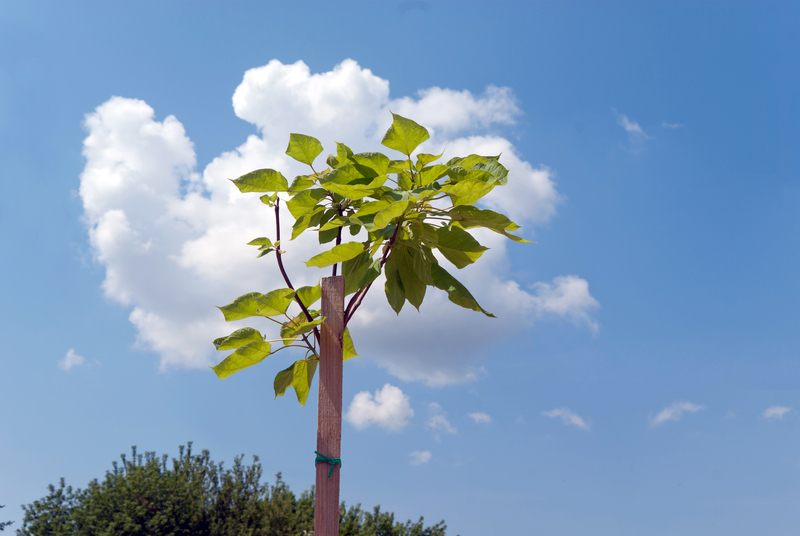Air-Purifying Plants for Your Home
Posted on 29/06/2025
Indoor plants do more than just beautify your living space; they can also improve air quality. Air-purifying plants help to filter out toxins, providing a healthier environment in your home. Research by NASA has highlighted several indoor plants that can effectively remove various pollutants from the air. In this article, we will explore the best air-purifying plants for your home, their benefits, drawbacks, and tips for care.
Top Air-Purifying Plants
1. Spider Plant (Chlorophytum comosum)
The Spider Plant is a popular choice due to its hardiness and efficiency in removing formaldehyde and xylene. It's easy to care for and grows quickly.
2. Snake Plant (Sansevieria trifasciata)
Snake Plants are hardy, require minimal care, and can thrive in low light. They are great at absorbing toxins, including nitrogen oxides and formaldehyde.
3. Peace Lily (Spathiphyllum)
Peace Lilies are not only beautiful but also very effective at removing ammonia, benzene, formaldehyde, and trichloroethylene from the air. They prefer shaded areas and need regular watering.
4. English Ivy (Hedera helix)
English Ivy is particularly good at removing benzene, formaldehyde, xylene, and toluene. It is versatile and can be grown in hanging baskets, providing a cascade of greenery.
5. Aloe Vera
Aloe Vera is known for its medicinal properties but is also effective in purifying the air. It helps remove formaldehyde and benzene, and its gel can be used for skin treatments.

Benefits of Air-Purifying Plants
Including air-purifying plants in your home offers several advantages:
- Improved Air Quality: Plants can absorb pollutants, reducing harmful toxins in the air.
- Enhanced Humidity: Indoor plants release moisture, helping to maintain humidity levels.
- Stress Reduction: Studies show that having greenery around can reduce stress and improve mental well-being.
- Increased Oxygen Levels: Plants release oxygen during photosynthesis, contributing to a fresher environment.
Drawbacks of Air-Purifying Plants
While there are numerous benefits, there are also a few drawbacks of keeping air-purifying plants:
- Maintenance: Some plants require regular watering, pruning, and care, which can be time-consuming.
- Allergies: Certain plants can trigger allergic reactions in sensitive individuals.
- Space: Larger plants can take up considerable space, which might not be feasible for small apartments.
Tips for Caring for Air-Purifying Plants
- Right Light: Ensure that your plants receive the appropriate amount of light. Some plants thrive in low light while others need direct sunlight.
- Watering Schedule: Overwatering can be as harmful as underwatering. Make sure to understand the specific watering needs of your plant.
- Regular Cleaning: Dust can accumulate on leaves, reducing the plant's ability to purify the air. Wipe leaves regularly with a damp cloth.
- Avoid Overcrowding: Give each plant enough space to grow. Overcrowding can lead to competition for light and nutrients.
- Monitor Health: Keep an eye out for any signs of disease or poor health and take corrective measures promptly.

Key Takeaways
- Air-purifying plants can significantly improve indoor air quality and add aesthetic appeal to your home.
- Popular air-purifying plants include Spider Plant, Snake Plant, Peace Lily, English Ivy, and Aloe Vera.
- While beneficial, these plants require regular care and may trigger allergies in some people.
- Consider factors like light, water, and space to ensure healthy growth of your plants.
Conclusion
Air-purifying plants are an excellent addition to any home. Not only do they help in filtering out toxins and enhancing air quality, but they also contribute to the overall aesthetic and emotional well-being of the household. By selecting the right plants and caring for them properly, you can enjoy a healthier, more pleasant living environment.
Ultimately, the benefits of incorporating air-purifying plants into your home far outweigh the drawbacks. With a little care and attention, these natural air filters can offer both functional and decorative value to your indoor spaces.




